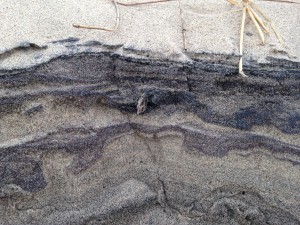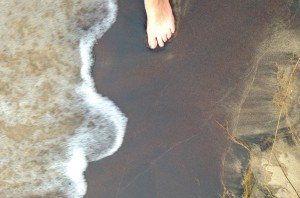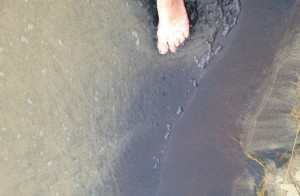The waves come. There will always be waves.
Sometimes the waves bring lovely gifts.
Sometimes the waves are large, and pounding, and they carve away at what’s there, revealing the layers that were underneath the surface.
They reveal the black sand.
The black sand has its own beauty, but it also clings thickly, clumping in a heavy mass on my feet as I walk through it.
I can’t avoid it. Sure, I could try to hike up the ledge, but even if I managed it, I’d have to walk in the sharp dune grass that is full of ticks. I could fight the waves, but I’m not dressed for getting soaked.
So I walk through the black sand (revealing the regular sand with every step).
Here’s the thing about the waves: they exposed the black sand, but they also wash my feet clean.
And the regular sand is right in front of me. Yes, it’s gritty. Yes, there are bits of black sand mixed in. But it is the sand I love to walk in, to play in. Dare I say, it gives my soul, and my soles, rest.
The waves will come. Sometimes they will reveal darkness, and I will have to walk through it. But, even so, with every step, the light is revealed, and I trust that I will walk in the light again.







